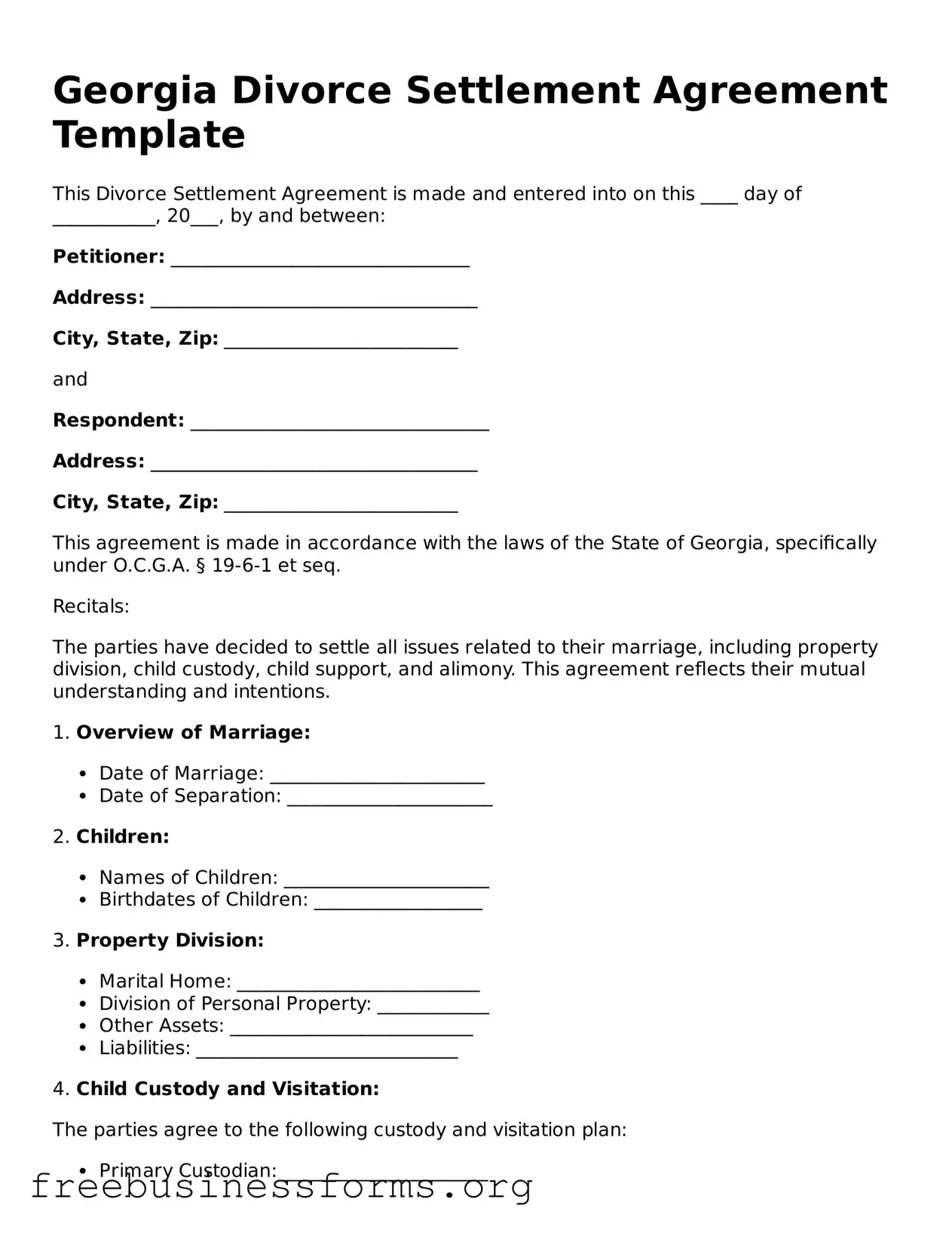Georgia Divorce Settlement Agreement Template
This Divorce Settlement Agreement is made and entered into on this ____ day of ___________, 20___, by and between:
Petitioner: ________________________________
Address: ___________________________________
City, State, Zip: _________________________
and
Respondent: ________________________________
Address: ___________________________________
City, State, Zip: _________________________
This agreement is made in accordance with the laws of the State of Georgia, specifically under O.C.G.A. § 19-6-1 et seq.
Recitals:
The parties have decided to settle all issues related to their marriage, including property division, child custody, child support, and alimony. This agreement reflects their mutual understanding and intentions.
1. Overview of Marriage:
- Date of Marriage: _______________________
- Date of Separation: ______________________
2. Children:
- Names of Children: ______________________
- Birthdates of Children: __________________
3. Property Division:
- Marital Home: __________________________
- Division of Personal Property: ____________
- Other Assets: __________________________
- Liabilities: ____________________________
4. Child Custody and Visitation:
The parties agree to the following custody and visitation plan:
- Primary Custodian: ______________________
- Visitation Schedule: _____________________
5. Child Support:
Monthly child support payment shall be $____________, beginning on ______________.
6. Alimony:
The parties agree to the following alimony terms:
- Amount: $_________________ per month
- Duration: ____________________
7. Additional Provisions:
Any other agreements or provisions made between the parties can be outlined here:
____________________________________________________________________
____________________________________________________________________
8. Governing Law:
This agreement shall be governed by and construed in accordance with the laws of the State of Georgia.
IN WITNESS WHEREOF, the parties have executed this Divorce Settlement Agreement on the date first above written.
Petitioner Signature:______________________________
Date: ________________________________________
Respondent Signature:____________________________
Date: ________________________________________
